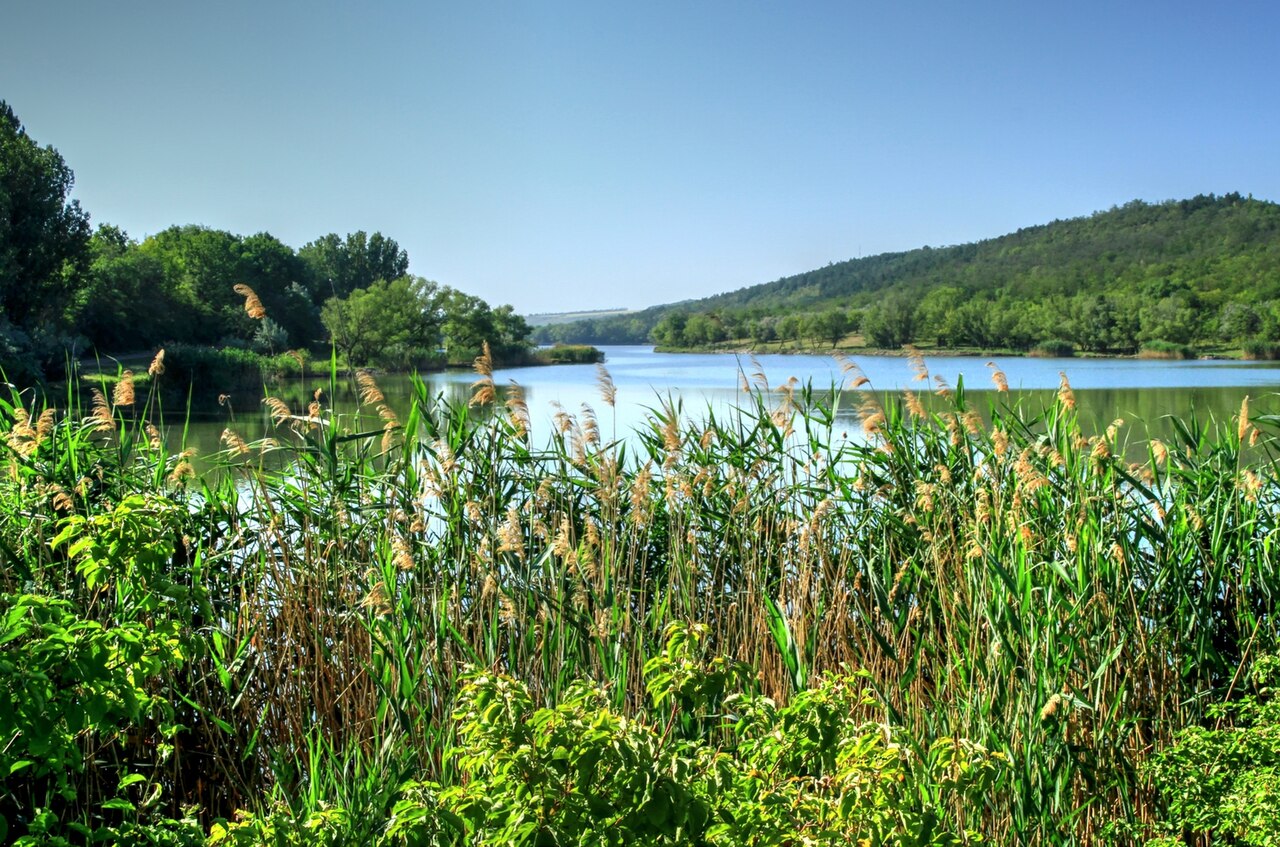
Discovering Moldova with #MOLDPRES: Iagorlîc Reserve, true biodiversity gem on left bank of Dniester
Iagorlîc is a scientific reserve in the central-eastern part of Moldova, placed at the mouth of the Iagorlîc River, on the left bank of the Dniester (Transnistria).
The reserve was established in 1988. Presently, the area of the reserve is 8.77 km2.
The reserve includes water and terrestrial ecological systems, where conditions have been created for the reproduction of animals and plants. It is located at the mouth of the Iagorlîc River, on the left bank of the Dniester and was created for biodiversity’s conservation.
The reserve was organized to preserve and study the ecological conditions characteristic of the water basins near the Dniester.
The value of the reserve
The greatest value of the Iagorlîc natural reserve is that it contains many rare and endangered species of plants, which enter unique phytocenoses located on the calcareous steppe slopes of the Iagorlîc, dry Iagorlîc River and some large streams.
The water basins of the natural reserve are also favored by various representatives of the fauna. They are most significant for various species of fish that use them for spawning. The ichthyo-fauna includes 23 species of fish. There are 29 species of mammals, 121 species of birds from 14 orders. Rare species include the European ground squirrel (Spermophilus citellus), the stoat, the hazel snake, the yellow-bellied snake, pond turtle. Among the birds found in the reserve area, there are the osprey (Pandion haliaetus) and the northern harrier (Circus cyaneus), the latter noted only during migration, species included in the Red Book of Moldova. The ornitho-fauna of the reserve consists of 167 species of birds, 91 of which nest here. Fifteen species of birds recorded in the natural reserve are included in the Red Book of Moldova (2001), 12 species in the Red Book of Ukraine (1994).
The reserve includes both water and terrestrial boundaries, where optimal conditions for the breeding of animals and plants have been created. The terrestrial area of the reserve is occupied by steppe plants including feather grass, fescue, and plantain. The forests occupy not very large areas and are represented by isolated copses of pedunculate and downy oak. The floodplain vegetation of the Iagorlîc River also occupies a limited area and includes such plants as reed, plantain and sea buckthorn. The underwater vegetation is well developed, including water soldier, reed, bulrush and pondweed.
On the territory of the reserve, 719 species of plants are recorded, of which 50 species are rare. Twenty tine species of animals live in the reserve. They are not "endangered," as in other reserves, but are of interest: roe deer, wild boars, stone martens, foxes and raccoon dogs. However, there are also rare species among them, such as the European ground squirrel and the stoat. Among the rare reptiles, there are the hazel snake, the bad snake (Aesculapian snake) and the pond turtle. The diversity of reserve habitats explains the large number of birds, totaling 121 species here. From the species included in the Red Book, the swan nests here, and during migration, the osprey and egret can be found.
For a nature walk on an ecological trail, tourists should know that the trail is narrow and occasionally difficult and clothing and footwear should be comfortable and suitable for the season. They should also have insect repellent spray with them.
Correspondent: Lilia Grubii
Moldovan winemakers captivated Benelux audience at Rotterdam Gastvrij exhibition
Discover Moldova with #MOLDPRES: Beșalma - Gagauz village that keeps tradition and cultural identity alive
PHOTO // Moldova's tourism promoted among diplomatic corps through informative tour
Discover Moldova with #MOLDPRES: EtnoFest Taraclia - cultural bridge between communities, traditions, generations
Discover Moldova with #MOLDPRES: Lake Beleu, through lens of photojournalist Andrei Mardari
PHOTO GALLERY // Beleu Lake: where calm meets nature
PHOTO // Moldova captures audience at International Gastronomy Festival in Paris
Discover Moldova with #MOLDPRES: Cahul Land Museum – gateway to history, traditions of country's south
Discover Moldova with #MOLDPRES: Land of boundless vineyards, tradition, taste, unique autumn tourist experiences
Discover Moldova with #MOLDPRES: Constantin Stamati's mansion from Ocnita, journey into 19th century Moldova
Discover Moldova with #MOLDPRES: Goian – village where tradition meets nature and authentic tourism
Editor-in-Chief of National Geographic Polska explores Moldova
Discover Moldova with #MOLDPRES: Ivancea village, one of most picturesque and historically rich places
Discover Moldova with #MOLDPRES: GurmanIA Festival in Tarigrad, Drochia - deep roots, authentic flavors, vibrant traditions
Vladimir Plahotniuc remains in preventive detention for another 30 days
Moldovan PM, Polish Ambassador discuss Poland's support for Moldova's development, European path
Moldovan PM, Chinese Ambassador discuss concrete benefits for citizens brought by collaboration between two states
Moldovan president outlines foreign policy priorities for 2026 at assembly of Moldovan ambassadors
Foreign policy priorities set at ambassadors' meeting in Moldova; Moldovan president says there is only one realistic strategy for survival as democratic, free, sovereign state for Moldova: EU membership
Anti-corruption prosecutors Vitalie Ivanov and Victor Cazacu heard as part of integrity assessment
Romania to host trilateral meeting of foreign ministers in 2026
Energy Minister: 2025 - turning point. Moldova decisively strengthened energy security
VIDEO // Moldova, Romania strengthen strategic partnership: economic cooperation, Infrastructure's development as priorities for 2026
Moldovan agriculture minister explains why shelf quotas are not enough
Romania's foreign affairs minister comes to Chisinau on December 22
PHOTO GALLERY // ''Covorul Dorului'' National Fair of Carpets, 12th edition
Human rights integrated into medical training at Nicolae Testemitanu Medical University of Moldova
Winter Solstice 2025: shortest day, longest night of year marks beginning of astronomical winter
PHOTO// Scientific community of Moldova honored at Researchers' Gala 2025; Moldovan education minister says researchers' work has future at home
Logistic routes blocked in southern Ukraine following recent attacks; shipments, including humanitarian aid, to be diverted through Moldova

